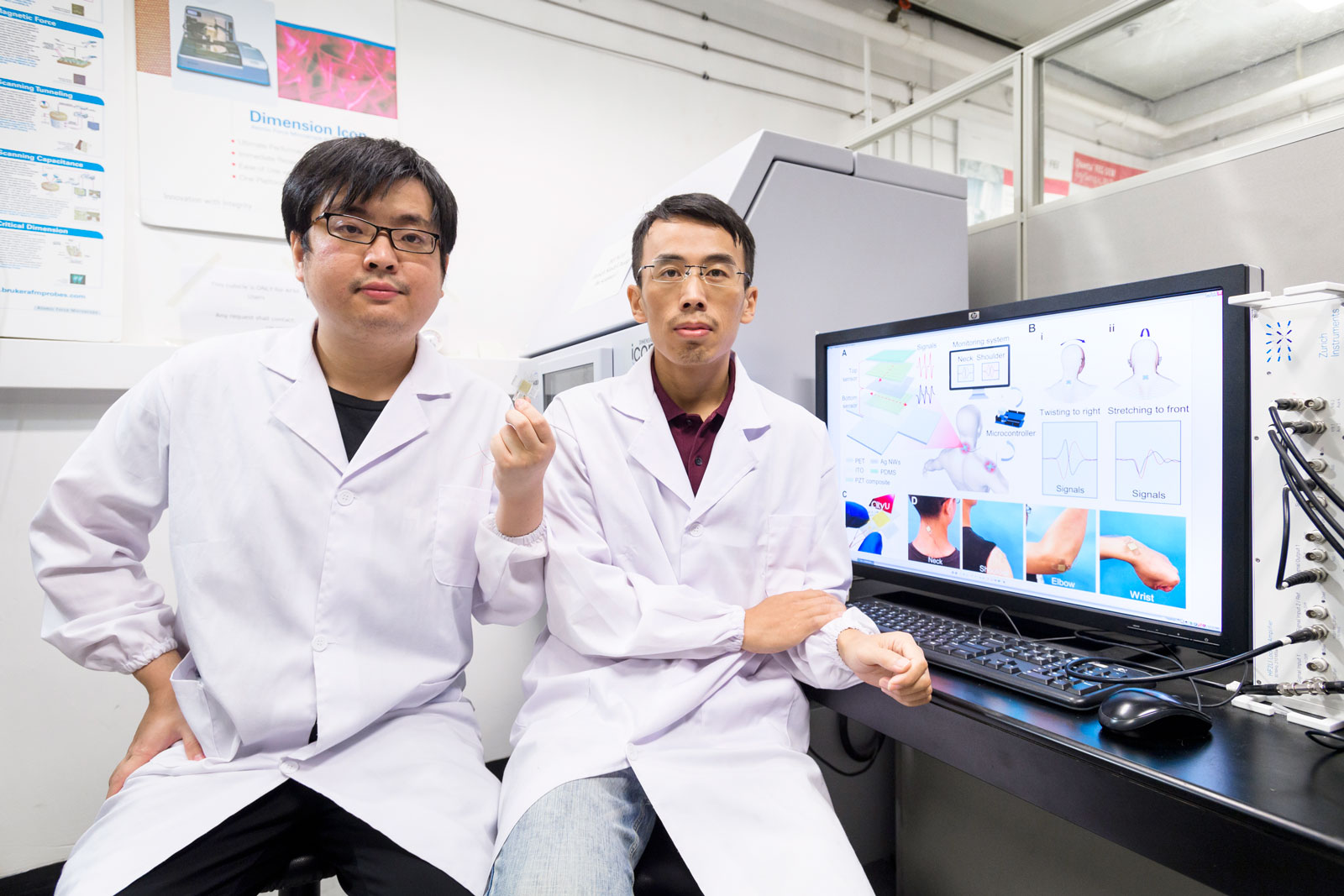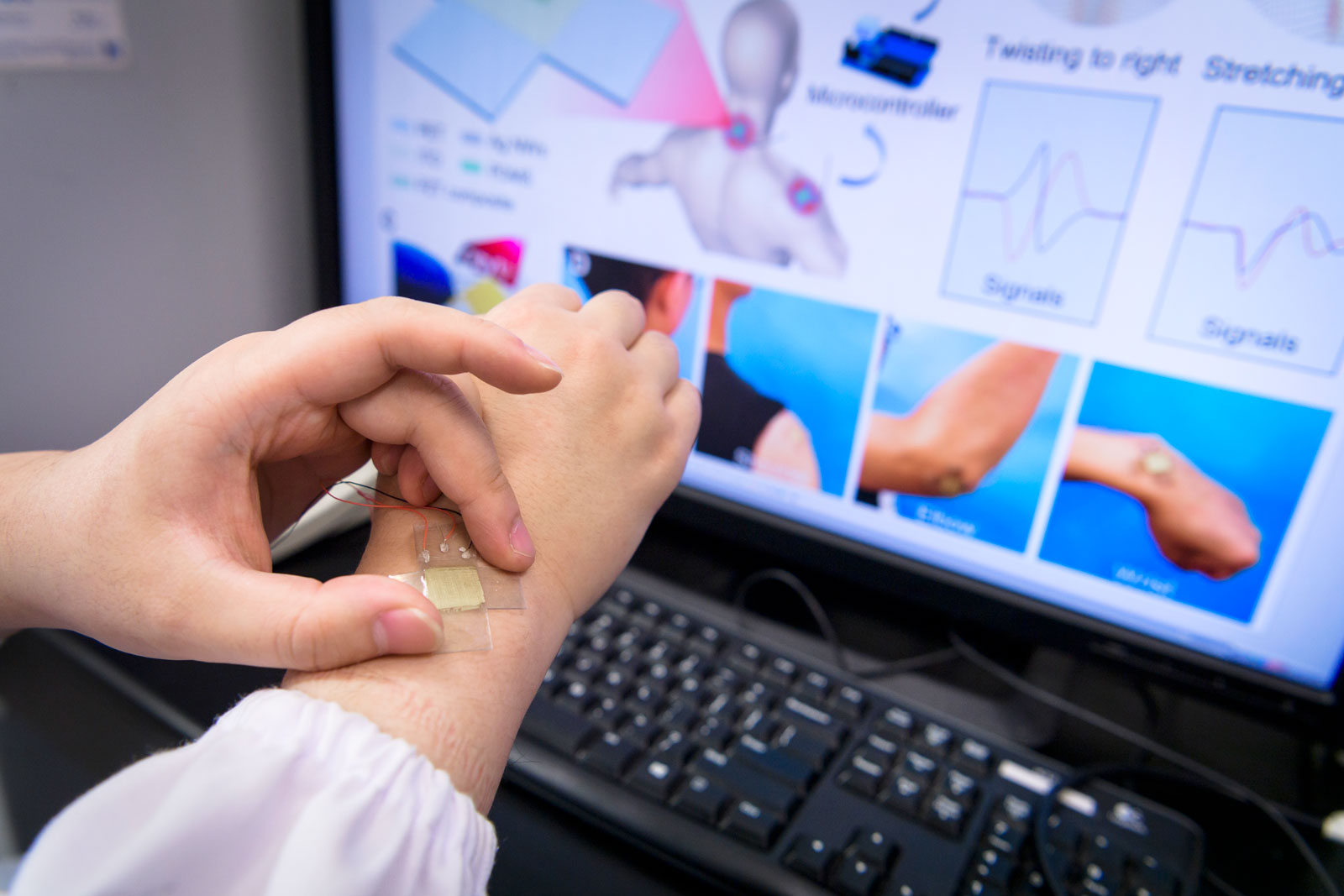
Joint disorders due to prolonged sedentary postures at work can now be effectively prevented and rehabilitated thanks to a new sensor developed at City University of Hong Kong (CityU).
The kirigami-structured sensor can fully monitor joint movements when attached to the human neck and shoulder, and offers more flexibility and precision than most wearable joint monitoring systems.
Findings of the research led by Dr Yang Zhengbao, Assistant Professor in the Department of Materials Science and Engineering and the Department of Mechanical Engineering, were published in Science Advances with the title “Highly anisotropic and flexible piezoceramic kirigami for preventing joint disorders”.
Individuals working at computers are especially prone to developing joint disorders, which initially manifest themselves as neck pain and shoulder fatigue. While there are healthcare sensors to regulate these sedentary conditions, they are typically bulky and have limited measurement capabilities.
By developing a bendable sensor with a larger measurement range, Dr Yang’s research team has sought to provide immediate and accurate joint health prognosis to these deskbound workers, ultimately reducing their risk of rheumatoid arthritis as well as enhancing their productivity and quality of life.
“This new sensor moves with the user without compromising comfort or accuracy. It can simultaneously distinguish and monitor multiple joint motions such as bending direction, bending radius and motion modes, something which traditional healthcare sensors cannot do,” said Dr Yang.
Utilising concepts of kirigami, a traditional art form where material is cut and folded, the team was able to achieve the flexible properties of the sensor. This stretchable design meant a wider measurement range as the sensor can cling to the user’s neck and shoulder contours, allowing for multi-directional measurements of joint movements.
Its piezoelectric effect, or ability to push electrical impulses when it detects stress, was also found to be highly sensitive. Such an excellent anisotropic piezoelectric response has enabled the team to establish the relationship between the bending direction and the bending radius to the electrical signals, thereby facilitating the motion analysis of human hands.
Furthermore, as the sensor can identify four types of deformation modes from joint motions with a 95% accuracy, it can provide the user with timely information pertaining to their joint health. To complement this capability, the team has developed a monitoring and alarm system to help users instantly detect and overcome long periods of inactivity.
“The kirigami-structured piezoceramic network is an exciting concept that can be adopted in other emerging piezoelectric devices. I believe that as this new technology will help to prevent and rehabilitate joint disorders, it will also inspire the use of flexible electronics in more health monitoring devices,” concluded Dr Yang.
Dr Yang is the corresponding author of this work, while Hong Ying and Wang Biao, CityU PhD candidates, are the first authors. Other collaborators include Lin Weikang, Jin Lihan, Liu Shiyuan, and Dr Luo Xiaowei from CityU, as well as Dr Pan Jia and Professor Wang Wenping from the University of Hong Kong.



